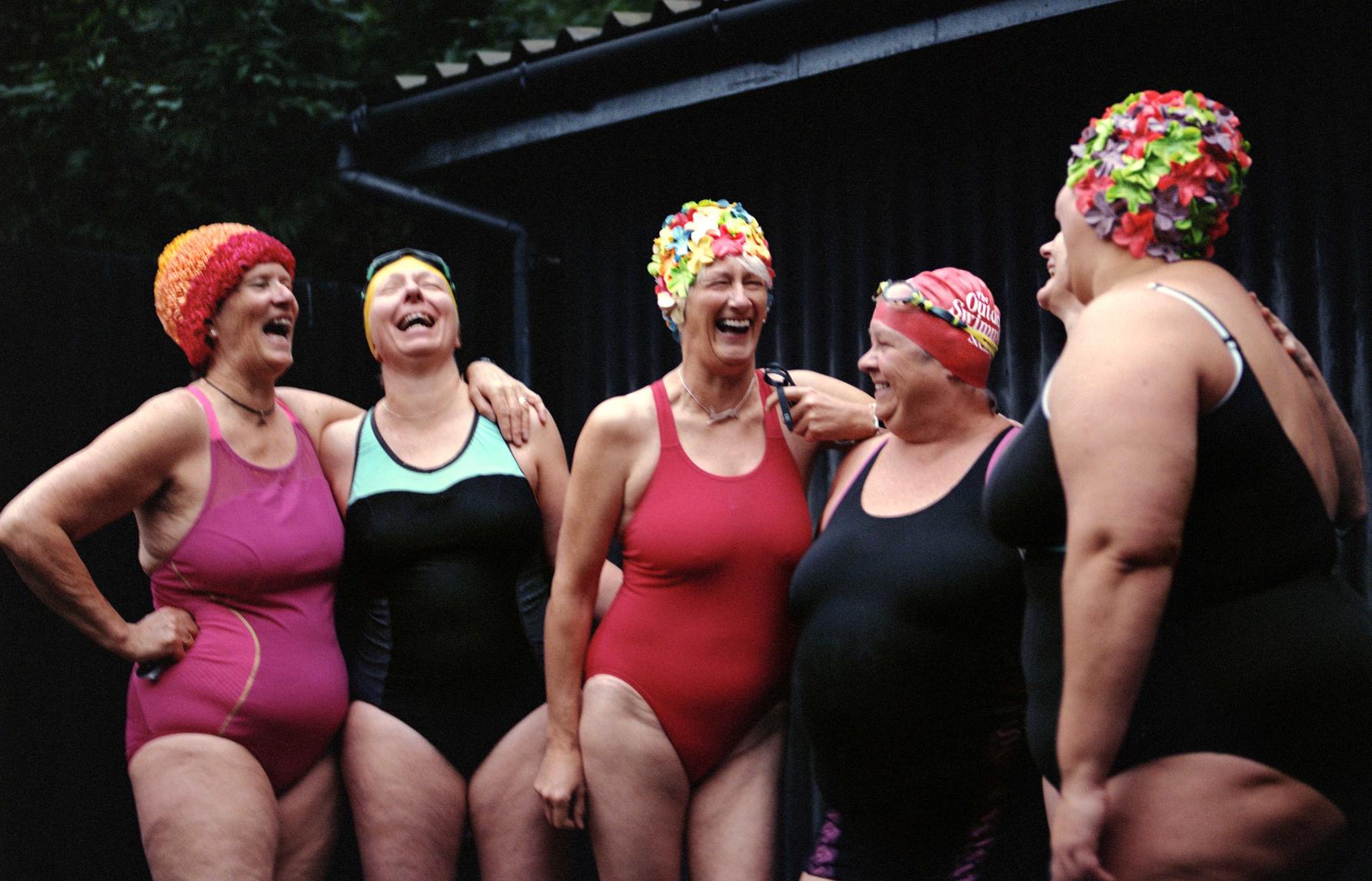This year’s newsletter topics ranged from bone drugs, muscle soreness, and supplements to dementia, olive oil, and whether we become more flatulent with age.
I also sat down with the five women I interviewed for my book seven years ago. I chose them originally because each illustrated at least one of the book’s themes, i.e. attitude (Goody), food (Elizabeth), exercise (Margaret), managing stress (Kym), and avoiding unnecessary chemicals (Corinne).
Today they’re aged between 62 and 85. Not surprisingly, they’ve dealt with their share of changes, including the birth of grandchildren, the death of parents, and in Margaret’s case, the death of her husband.
At the same time, they’re mostly still doing the things that inspired them seven years ago, in some cases more or at a higher level than before.
And Margaret left us with this quote:
“No one can tell you how 85 should feel, so you have to decide. It’s what you do with that age that matters.”
Most read post of the year
It was the first one, and it was on vaginal estrogen pessaries. In a nutshell, here’s what it said:
After menopause, when our bodies make less estrogen, both our vaginal tissue and our urinary tract can be affected. Vaginal tissue becomes thinner and drier, and we have less of the bacteria that keep a healthy vagina.
That bacterial change also affects the urinary tract, increasing our risk of urinary tract infections.
Estrogen pessaries help restore vaginal tissue and can reduce our risk of infection by 50%. In short, it’s a sensible option for a lot of women.
(Bear in mind that this kind of pessary is different to those used for pelvic organ prolapse, though they can be extremely beneficial too.)
There were also posts on three supplements — creatine, collagen and magnesium.
Creatine (or creatine monohydrate) provides energy for muscular contraction. As we age, our capacity for strong, fast movements diminishes, and creatine is thought to aid in the recovery of that capacity.
Along with resistance exercise it helps to improve function and build muscle and strength, which also supports bone health.
US exercise physiologist Dr Stacy Sims says it might be the most important supplement many women still aren’t taking.
Collagen is the main protein in our bodies, providing the building blocks for bones, muscles, tendon, ligament, cartilage, skin, and hair.
While we produce it naturally, we lose it with age. For example, by the time we’re 80 we’ve lost 75 percent of what we once had.
Collagen supplements are promoted as a way to improve skin, hair, and nails, though there’s not much evidence.
It’s possible they support bone and joint health. Studies here look more promising, but we’re still a long way from being able to say with certainty that they do.
Magnesium is a workhorse mineral, playing a role in more than 300 functions, including blood sugar regulation, energy production, heart health, calcium and vitamin D regulation, and muscle and nervous system support.
It’s not produced by the body, so we need to get it from food (e.g. leafy greens, legumes, nuts and seeds, dairy, grains, bananas, avocados) or supplements.
A range of factors can reduce our levels. As well as eating too many processed foods and not enough of those above, these include strenuous exercise and/or heavy sweating, alcohol, gut issues such as celiac disease or inflammatory bowel disease, kidney disorders, and some medications (e.g. diuretics and proton pump inhibitors).
Magnesium comes in many forms, so read the labels carefully to make sure you’re getting what you think you’re getting.
Two other snippets to take away…
Strength training doesn’t just make us stronger and build muscle and bone. It also supports our heart and brain.
We know that aerobic style exercise such as walking, swimming, jogging, cycling, and dancing boosts our circulation, which improves the health of our heart and blood vessels, as well as our brain.
But so does resistance exercise. It can reduce blood pressure, blood sugar, cholesterol, and body composition, all of which are vital for keeping both organs working well.
Aim to do some of both.
Positive thoughts and feelings appear to help protect us against heart disease
Stress, anxiety, and depression have been shown to make arteries stiffer, narrower, and more inflamed, increasing blood pressure. So it makes sense that the opposite could be true too.
A US study found that women who felt more satisfied and optimistic about life had less plaque in the main arteries of their hearts.
It’s not the kind of research that can show proof, and it might sound like poppycock, but positive feelings trigger the production of nitric oxide in the lining of our arteries which relaxes and opens them, allowing blood to flow more freely.
In addition, the research of Yale psychology professor Becca Levy showed that people with a positive attitude towards ageing live an average of seven years longer than those with a negative view.
So we can’t underestimate the impact of thoughts and feelings on our physical bodies.
In October, I asked 10 women how they deal with stress. Which is a great start for anyone keen to manage their thoughts and feelings in a more beneficial way. Here’s a link to what they said.
And to next year…
A thought for 2025. It’s not something I wrote about in the newsletters, but I have a friend — a 79-year-old man — who likes to say he’s doing his best to ‘not let the old man in’.
At some point I discovered that this line originally came from actor Clint Eastwood.
Eastwood was turning 88, and American country singer, the late Toby Keith, apparently asked him what he did to keep himself going.
Eastwood replied, “I try to get up and be productive, and don’t let the old man in”.
Keith then wrote a song called Don’t Let The Old Man In. He sent it to Eastwood who included it in his 2018 movie, The Mule.
Towards the middle of this year, I heard a woman called Sal Edwards interviewed for a podcast called Hit Play Not Pause. It’s aimed at active women who want to maximise their physical performance through peri- and post-menopause.
Sal, 77, was a pioneer in endurance sport for women. She competed in the first US women’s Olympic marathon trials and became a professional triathlete. She’s also written more than 20 books, mostly about heart rate as a training guide.
She’d heard Toby Keith’s song and decided it wasn’t just about men.
In the podcast she said: It’s a mental state. When we start to age, functional capacities change. Including flexibility and endurance and speed, and I accept that as part of life. It’s OK.
What I don’t want people to do is ‘let the old woman in’. And the ‘old woman’ is more than a mindset. It’s like: ‘I’m getting worse’. And so (people think) it’s OK to get worse.
You know, it’s not.
Our physiology, sure, it’s going to change. But it’s better to accept the change and go ‘I’m just going to do the best I can’.
I’m going to train the best I can. I’m going to stay contemporary. I’m not going to let anything interfere and make me an old person.
I think taking risks and challenges are really important. I think learning new things is important. When was the last time you did something for the first time?
That means let’s always do new things, let’s set some new goals… and that will help to not let that old women in.
Photo Source: Getty Images

